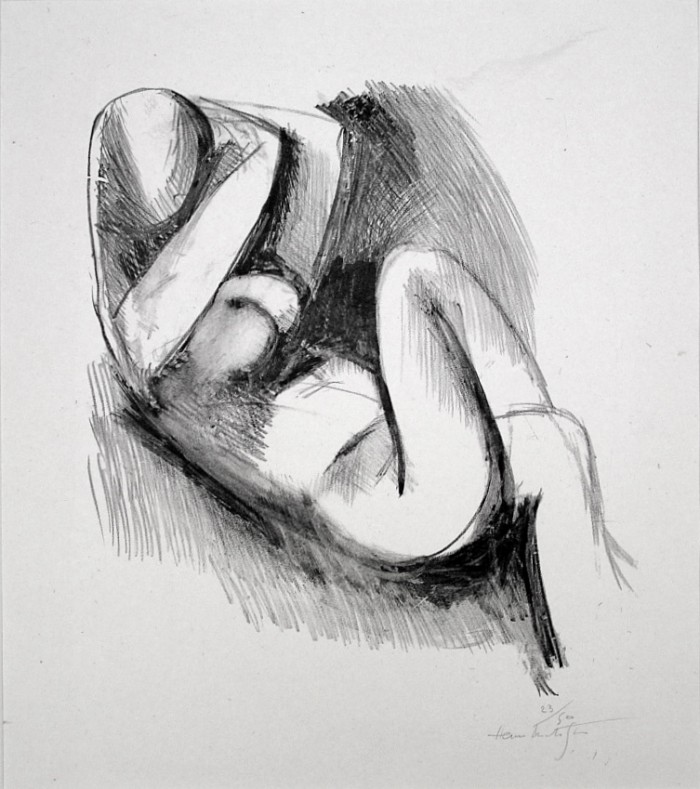Le Grand Nu

Henri Matisse (1869-1954), Le Grand Nu, lithograph, 1906, signed and numbered (23/50) in pencil lower right. Reference: Duthuit-Garnaud 403, only state, from the edition of 50. Printed by August Clot, Paris. In excellent condition, the full sheet, 11 1/8 x 9 7/8, the sheet 17 11/16 x 13 3/4 inches, archival matting.
A fine rich impression, printed in black on a soft light China paper.
Le Grand Nu is Matisse’s first lithograph, drawn directly on the stone; it is a landmark print both in his career as an artist and printmaker, and in the history of modernist printmaking.
By 1906 Matisse had been involved in Fauvist art for a couple of years, and Le Grand Nu is often regarded as a Fauvist print (and so it is, at least chronologically). But as many commentators have observed, it also has strong cubist elements, although Braque and Picasso were to embark on their cubist work some time after Le Grand Nu. But perhaps the cubism of Le Grand Nu is really a reflection of the importance of Cezanne to Matisse – Cezanne’s ability to abstract form, to reduce objects to their simplest forms – his cones, cylinders, spheres. At about the time he created Le Grand Nu Matisse defined his aesthetic aims:
“What I am after is expression…Expression to my way of thinking does not consist of the passion mirrored upon a human face or betrayed by a violent gesture. The whole arrangement of my picture is expressive. The place occupied by figures or objects, the empty space around them, the proportions, everything plays a part….every part will be visible and will play the role conferred upon it…All that is not useful in the picture is detrimental. A work of art must be harmonious in its entirety; for superfluous details would, it the mind of the beholder, encroach upon the essential elements. “

detail